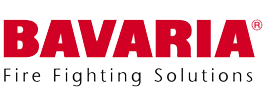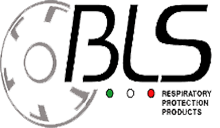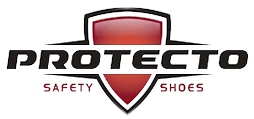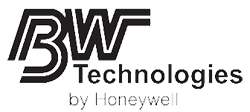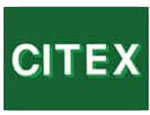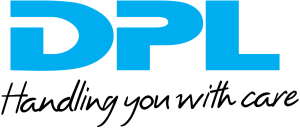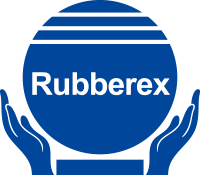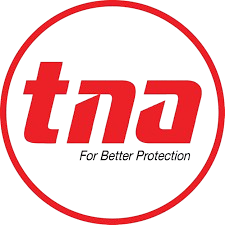Buying firefighting equipment can be confusing. There are so many options out there, and a lot of them look the same. But are they actually safe? Without understanding the standards behind the products, it’s hard to know if you’re picking the right gear to protect yourself or your team.
And that’s where the real risk comes in. Not all safety equipment goes through proper testing. If something goes wrong—like an electrical fault, a chemical spill, or a fall—uncertified gear might not hold up. This can lead to serious injuries, failed inspections or costly shutdowns. Sadly, many people only realize the gear wasn’t reliable after it’s too late.
This is where EN, ANSI and ISO standards make a big difference. These trusted global systems ensure that your equipment is tested, certified and ready to handle real job-site risks. When you know what these standards mean, you can choose your equipment with confidence, meet legal requirements and keep everyone safer on the job.
Understanding Safety Standards: EN, ANSI, and ISO
When it comes to choosing the right safety equipment, standards matter. These rules help make sure the safety gear you’re using is built well, tested properly, and ready to protect you when it counts. Different organizations around the world set these standards, each with a slightly different focus depending on where and how the gear is used.
What Are EN, ANSI, and ISO Standards?
EN stands for European Norms. These are the safety rules used mostly in Europe. You’ll often see EN codes on helmets, gloves, goggles, and other protective items. This means the gear was tested thoroughly before being approved for use in Europe.
ANSI is short for the American National Standards Institute. It’s the organization that creates safety rules mainly used in the U.S. ANSI standards apply to items like hearing protection, safety clothing, and power tools. The focus here is making sure safety gear performs well in real working conditions.
ISO stands for the International Organization for Standardization. Companies worldwide use ISO rules, which encompass not only equipment but also their safety management practices. When you see an ISO label, it means the product meets global safety and quality standards, no matter where it was made.
Key Differences Between EN, ANSI, and ISO
The biggest difference is location: EN is used in Europe, ANSI in the U.S., and ISO is accepted globally.
EN standards are known for their strict testing methods. Products must pass very specific tests to get approved.
ANSI rules are a bit more flexible and designed for practical use in American workplaces.
ISO standards are broader. They cover both how safety equipment is made and how it’s used and managed by companies. This makes ISO helpful when your work spans across different countries.
Global Reach and Regional Impact of Each Standard
In Pakistan, there’s no single national safety standard, so companies often rely on global ones like EN, ANSI, or ISO. These are especially important in industries like construction, manufacturing, and oil and gas.
ISO-certified safety equipment is widely used for general needs, while EN and ANSI standards are sometimes required for government or international projects. Using certified safety gear not only helps meet safety rules—it also protects workers and builds trust with clients.
Why Meeting the Right Safety Standard Matters
Choosing the right certified safety equipment isn’t just about ticking boxes. It helps keep people safe, avoid legal problems, and make sure the gear does what it’s supposed to do—protect against real dangers.
Ensuring Legal Compliance and Workplace Safety
When your gear is certified under EN, ANSI, or ISO, it usually means it meets legal safety standards. This can help your business avoid fines or issues during inspections.
In some countries, it’s a legal requirement for safety gear like helmets or gloves to meet certain standards. If it doesn’t, and someone gets hurt, your company could be held responsible.
On top of that, certified gear offers peace of mind. It’s been tested, so you know it will work when needed most.
Risk Mitigation Through Proper Certification
Gear that follows EN, ANSI, or ISO rules has been tested in tough, real-life conditions. That means it can handle impacts, heat, chemicals, or other risks specific to your job.
Using certified gear reduces the chance of equipment failure, workplace accidents, or delays. It also shows your team that their safety comes first.
Assessing Your Workplace Safety Needs
Before buying safety equipment, it’s important to understand what kinds of risks your team faces. That way, you can choose the right standards to match.
Identifying Hazards Specific to Your Industry
Start by listing the most common dangers in your workplace. For example, construction sites often deal with falling objects and sharp edges, while chemical plants have issues with fumes or spills.
Here are a few examples:
- Physical risks (falls, cuts, burns)
- Chemical exposure (toxic substances, gases)
- Environmental conditions (extreme heat, cold, or loud noise)
Once you know what you’re up against, you can choose safety equipment that offers the right protection—without buying stuff you don’t actually need.
Selecting Standards Based on Risk Levels
Once you understand the risks, match them with the right safety standards. For example, if your job involves electrical hazards, look for safety gear tested under ANSI or EN rules for electrical protection.
Quick reference guide:
| Risk Level | Recommended Standard(s) | Example Equipment |
| Low | ANSI Z87 (eye safety) | Safety glasses |
| Medium | ISO 3864 (label safety) | Chemical-resistant gloves |
| High | EN 361 (fall protection) | Full-body safety harness |
Choosing the right standard for the job means better protection without overspending on gear you don’t need.
How EN Standards Influence Equipment Selection
Understanding EN standards makes it easier to know if your gear meets European safety rules. This helps you make informed choices and avoid buying uncertified or unsafe equipment.
Recognizing EN Markings on Safety Equipment
When you’re checking labels, look for codes like EN 388 or EN 166. These numbers show which safety tests the item passed.
For example:
- EN 388: Tested for resistance to cuts and scrapes
- EN 166: Meets eye protection standards
You might also see ratings like numbers or letters that explain how strong the gear is. The higher the number, the better the protection.
These markings help you choose safety gear that’s legal and effective—especially in places where EN rules are required.
Industry-Specific EN Requirements
Different jobs require different EN-certified equipment. For example:
- Construction workers need helmets (EN 397) and waterproof boots (EN 343).
- Healthcare workers need gloves and masks that follow EN 455.
- Welders should wear gloves and eyewear certified under EN 169 and EN 407.
Knowing which EN rules apply to your field helps you buy the right gear and stay safe on the job.
ANSI Standards and Their Role in North America
In the U.S., ANSI sets the bar for what safe, reliable safety equipment should look like. Their rules are clear and easy to follow.
Understanding ANSI Labeling and Classifications
ANSI labels show how much protection a product offers—things like impact resistance or splash protection.
For example, ANSI Z87.1 means the safety glasses passed tests for flying debris and side protection. Gear is often sorted by what it protects against: dust, impacts, chemicals, etc.
Knowing how to read these labels helps you choose the right safety gear for your needs.
Advantages of ANSI-Certified Equipment
ANSI-certified gear is trusted because it’s tested in real-life job conditions. It also helps you stay compliant with U.S. safety laws.
Many employers in North America require ANSI gear because it offers proven protection. With ANSI labels, you know the product meets high standards—and that it’s ready to do its job.
Global Perspective: ISO Standards for Safety Equipment
ISO is about setting shared safety rules that work across countries. That makes it easier for companies to create reliable gear for global use.
ISO Certification and International Trade
When a product has ISO certification, it means it meets global standards. This makes it easier to sell or ship equipment across borders—and gives buyers more confidence.
Whether you’re buying or selling, ISO-certified safety equipment is trusted worldwide.
ISO Guidelines for Product Quality and Reliability
ISO doesn’t just focus on safety—it also checks quality and durability. Their rules look at:
- Strong and long-lasting materials
- Reliable performance
- Regular quality checks during production
This means the gear is built to last and works well when it counts.
Comparing Equipment Certified by EN, ANSI, and ISO
When you’re shopping for safety equipment, always check which standard it follows. Each one focuses on something a bit different:
- EN = European safety testing
- ANSI = U.S. job site safety
- ISO = International quality and safety
| Feature | EN | ANSI | ISO |
| Region | Europe | United States | Global |
| Focus | Product testing | Job safety | System-wide safety |
| Test Detail | Very detailed | Practical | Broad |
| Recognition | Europe-wide | U.S.-wide | Worldwide |
Choose the standard that matches your work and your country’s rules.
Common Pitfalls in Choosing Safety Equipment
It’s easy to make mistakes when buying safety equipment. One of the biggest? Skipping the certification check. Uncertified gear might be cheaper—but it usually doesn’t protect well.
Also, don’t buy just based on price. Certified gear may cost more, but it lasts longer and does its job right. Comfort is another factor—gear that doesn’t fit well can be distracting or even unsafe.
Don’t buy gear just because of a brand name either. Big brands can still make unsafe products if they’re not certified. And never mix certified with non-certified items—it weakens your safety setup.
| Pitfall | What to Do |
| Ignoring standards | Always check for EN, ANSI, or ISO marks |
| Choosing by price | Focus on certified quality |
| Bad fit | Try on or measure before buying |
| Trusting brand only | Always check certification |
| Mixing gear types | Stick with fully certified equipment |
Emerging Trends in Safety Standards
Safety standards aren’t staying the same—they’re evolving with new technology and job risks.
Some new trends:
- Smart gear: Helmets or vests with sensors and apps
- Eco-friendly materials: Better for the environment
- Comfort upgrades: Gear designed to fit better and feel lighter
| Trend | What It Means for You |
| Digital Safety | Real-time alerts through smart devices |
| Sustainability | Safer materials, better for the planet |
| Ergonomics | More comfort for longer wear |
Guidance on Verifying Compliance for Your Needs
Before you buy any safety gear, make sure it’s really certified. Look for clear markings like EN, ANSI, or ISO codes.
How to verify:
- Ask for certificates from the seller
- Check official safety websites
- Request product test reports
| Standard | Common Marking | What It Covers |
| EN | EN XXXX | European safety tests |
| ANSI | ANSI/ISEA XXXX | U.S. workplace safety |
| ISO | ISO XXXX | Global safety rules |
Also, buy only from trusted sellers. This helps avoid fake or low-quality gear. If you’re not sure, ask an expert or visit the official websites of the standard organizations.
Conclusion
Understanding EN, ANSI, and ISO standards helps you choose equipment that’s tested, certified, and trusted to protect people on the job. Certified gear doesn’t just meet legal requirements—it keeps workers safe and helps build a strong culture of safety. If you’re in Pakistan and need reliable, certified safety equipment, HAC and Sons offers a full range of products to match your industry needs. Reach out to them for expert help and equipment you can count on






